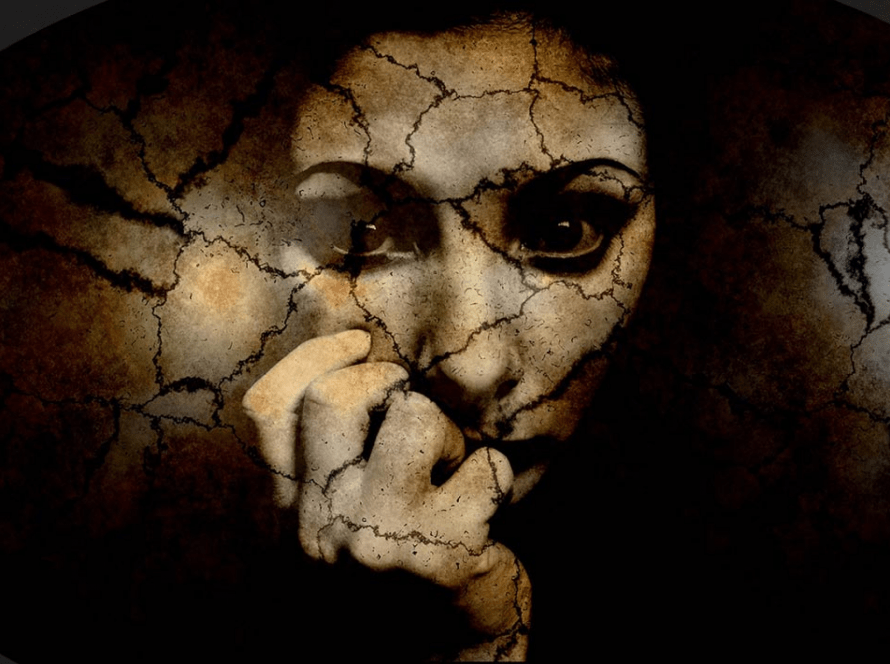Am I having a panic attack?
A client, called Tom, described to me an intense wave of fear where his heart was pounding. He couldn’t catch his breath and reported feeling like he was dying. He was also starting to avoid many places and situations for fear of having other panic attacks.
Tom’s situation, described above, is typical of so many people struggling with panic attacks.
Panic attacks often feel like they strike out of the blue, without any warning, and sometimes with no clear trigger. They may even occur when you’re relaxed or asleep which is even more scary and confusing. This can be especially true if you suffer panic attacks at night.
A panic attack may be a one-off occurrence but many people experience repeated occurrences. Recurrent panic attacks are often triggered by a specific situation, such as busy crowded places or speaking in public.
This is especially true if that situation has caused a panic attack before. Why? Because the person may be worried about having another panic attack.
Often the panic-inducing situation is one in which you feel scared and unable to escape. This triggers the body’s fight-or-flight response which, of course, produces more symptoms of anxiety.
These symptoms of anxiety might include a racing heart, breathlessness, dizziness and dry mouth. In themselves, they are not harmful but they may start the person worrying the symptoms are a sign of something catastrophic about to happen.
What does a panic attack feel like?
There are various signs and symptoms of a panic attack. A panic attack develops very quickly and usually reaches its peak within 5 to 10 minutes. They rarely last more than an hour, with most ending within approximately 20 to 30 minutes. Panic attacks can happen anywhere and at any time. You could have one while you’re shopping, walking down the street, driving in your car, or even sitting on the sofa at home.
Panic attack symptoms include shortness of breath, heart palpitations or racing heart, chest pain, trembling or shaking, choking feeling and sweating. There can also be an unreal or detached feeling as well as sweating, nausea, dizziness, light-headedness, or a feeling of fainting.
This intense rush of symptoms normally leaves the person feeling like something terrible will happen. Such fears may include dying, having a heart attack, losing control or going crazy.
Are panic attacks dangerous?
Although it feels scary and that something dangerous and catastrophic is going to happen, panic attacks are not dangerous. Of course, they feel very unpleasant but the feared situation never happens.
Most people will describe being afraid of having a heart attack, fainting, losing control or going mad. But these feared situations seem never to actually happen in reality.
So panic attacks are not harmful but are extremely unpleasant.

How to stop a panic attack
There are some things you can try yourself which may ease or stop the panic attack.
The next time you feel a panic attack coming on:
- Try not to ‘fight’ or resist it
- Stay where you are, if possible
- breathe slowly and deeply
- remind yourself that the panic attack will pass. Perhaps say to yourself, ‘this too shall pass’ and that ‘although this feels dangerous, it is just symptoms of anxiety and nothing scary will happen’.
- focus on positive, peaceful and relaxing sensations around you such as noticing what you can hear, see, feel, smell and taste.
- remember the panic attack is not life-threatening. Although you may be worrying about some terrible harm occurring immediately, remember nothing dangerous has happened previously. And is unlikely to happen in the future.
How to help someone having a panic attack
Seeing a friend or loved one suffering from panic attacks can be very difficult. Inevitably, you want to know how to help. Their breathing could become very fast and shallow. They may become dizzy or light-headed, tremble, sweat, feel nauseous. They may even think they’re having a heart attack and that they could die.
No matter how irrational you think their panicked response to a situation is, it’s important to remember that the danger. Don’t forget – the immediate threat seems very real to them. Simply telling them to calm down or minimising their fear may not be so helpful.
By helping your friend or family member ride out a panic attack, you can help them feel less fearful of any future attacks.
So, a few helpful tips when helping someone having a panic attack:
Stay calm yourself. Being calm, understanding, and non-judgmental will help the panic subside faster.
Focus the person on the here and now. Perhaps find a quiet place for your friend to sit and then guide them to take slow, deep breaths for a few minutes. Doing something physical, involving the senses may help to focus attention elsewhere.
Get your friend out of their thinking mind by asking them some questions. For example, ask them to name five things around them or talk soothingly about a shared interest.
Encourage the person to seek help. Once the panic attack is over, the person may feel embarrassed about having an attack in front of you. Reassure them that panic attacks are very common and normal. Encourage them to seek help for their anxiety and panic, telling them that there is good effective help available.
Treatment for panic attacks & panic disorder
The good news is that panic attacks are treatable. What a relief! There are various strategies and tools you can use to reduce or cut the symptoms of panic. These will help you regain your confidence and take back control of your life.
The most effective form of professional treatment for tackling panic attacks, panic disorder, and agoraphobia is a type of therapy called Cognitive Behavioural Therapy (CBT).
CBT treatment for panic attacks is a short course of therapy which is found to be very helpful.
Cognitive behavioural therapy (CBT)
CBT focuses on the thinking patterns and behaviours that are sustaining or triggering your panic attacks. CBT also helps you look at your fears in a more realistic light. Once you learn that nothing truly disastrous is going to happen, the experience of panic becomes less terrifying. Besides learning to manage the worrying thoughts, there are many practical doing things that also help to break the vicious cycle of anxiety and panic.
CBT therapy can be done in person with a therapist or online.
Be in touch to discuss how CBT can help you manage your panic attacks.
Gary Janit
I offer confidential individual psychotherapy & CBT as well as Imago Relationship Therapy in Manchester.
I am registered and accredited with the following professional organisations, abiding by their ethical codes:
BABCP (British Association for Behavioral and Cognitive Psychotherapies), UKCP (UK Council for Psychotherapy), HCPC (Health & Care Professions Council) as well being a graduate member of the BPS (British Psychological Society).
.



